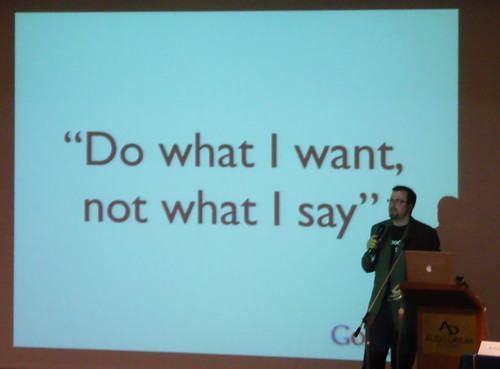 The goal of the IT department is not to make friends. Nor is it a good idea to follow the old thinking that staff in your organization are your customers. IT should act as a partner.
The goal of the IT department is not to make friends. Nor is it a good idea to follow the old thinking that staff in your organization are your customers. IT should act as a partner.Whoa, slow down Steve, what does that have to do with the IT Planning and Prioritizing chapter by the brainiac Peter S. Campbell in the NTEN book, Managing Technology to Meet your Mission? Well, if you would be more patient, I will get there. I was trying to think what I could add to Peter’s chapter without just repeating his totally accurate and well thought out methodology. Because I cant compete with his knowledge on this topic.
However, I think an element that should be stressed when Peter talks about building that integrated plan that includes technology, is understanding how IT is seen by the org. We can write the best plans, set goals, define metrics and have all the best intentions, but if IT doesn’t have the relationships it needs they wont be acted on.
If you think of the staff in your organization as customers, then your ultimate goal would be to meet their needs working with the motto that the customer is right. In this approach you react to the requests and needs of your customers. Your role is to provide the solution, support or training that they tell you they need.
If you strive to have the friendliest, well liked relationship with the staff, then all you do is strive to make them happy. But sometimes we have to push back on some ideas in order to balance the needs of the full organization. We simply cannot make everyone happy all the time and be their BFF.
We have to act as a partner, we are all working toward the same mission. The relationship between IT can be a friendly one, but our allegiance should lie with the mission and strategic plan. As a partner we work with the other departments, not for them as customer implies.
So tying this all back to Peters “spot on” description about IT priorities and planning. Our ability to participate in the planning process and get invited to the table with access to provide input depends on the role we play. If we are simply taking orders, then the IT priorities will be subject to whimsical changes. If we are there to be their friends, will they heed our advice and expertise?
After saying all of that though, you would be mistaken in not reading Peter’s chapter and implementing the process he recommends. You may just want to be sure you keep the whole picture in mind and read the rest of the book too. The best laid plans….
Over 11 weeks I am doing a themed series of blog posts. Each week I will write about a chapter of the book called Managing Technology to meet your Mission. This week is on the 4th chapter about IT Planning and Prioritizing. You should totally buy the book. (In case you are wondering, I am volunteering to do this, I am not getting paid or in any other way reimbursed for this. I just love NTEN and their events.)
Flickr photos by kalandrakas and by Claudio Cicali and by LollyKnit




